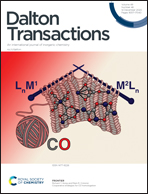Excitonic enhancement of colour emission and Förster resonance energy transfer in chemically synthesized Mn-doped ZnS nanomaterials
Abstract
This study has been carried out to understand the mechanism of charge carrier dynamics and the existence of exciton-dopant energy transfer within Mn-doped ZnS nanomaterials. Improvement in the energy transfer efficiency and electroluminescence properties of these nanomaterials has been investigated for using them as an emissive layer of LEDs. A chemical co-precipitation method has been used to synthesize ZnS with varying Mn contents to achieve enhanced luminescence properties demonstrating the effect of Mn doping on excitonic luminescence intensity. X-ray powder diffraction analysis reveals the prepared materials to be cubic crystallites with size varying between 2 nm and 4 nm. Agglomerated clusters and a nanogranular morphology have been observed in SEM analysis. The UV-Vis spectra reveal that the band gaps slightly decrease with an increase in the Mn content in ZnS samples. The photoluminescence spectra show that upon Mn incorporation, the intensity of blue emission at 420 nm increases due to the surface states in ZnS; an orange emission at 588 nm is also observed due to a transition within Mn2+. The energy transfer efficiency of 3 to 6% was measured theoretically by using the FRET (Förster resonance energy transfer) model. Mn-doped ZnS shows high photoluminescence quantum yield (QY) in comparison with ZnS, where 0.04 mol% Mn-doped ZnS achieved the highest QY of about 28.94%. The CIE chromaticity coordinates accordingly shift toward white from the blue region upon Mn substitution. A kinetic model has been used to determine the energy transfer efficiency, which affects the luminescence properties of ZnS. The FRET model has suitably unraveled the Förster radius and interatomic distance, which make the energy transfer possible in these materials. We have found 0.04 mol% Mn-doped ZnS with an enhanced energy transfer efficiency. The maximum external quantum efficiency of about 0.643% can be achieved at 2.9 volts of operating voltage for this nanomaterial. These highly luminescent materials possess the characteristics of an emissive layer to be used for light-emitting applications.



 Please wait while we load your content...
Please wait while we load your content...